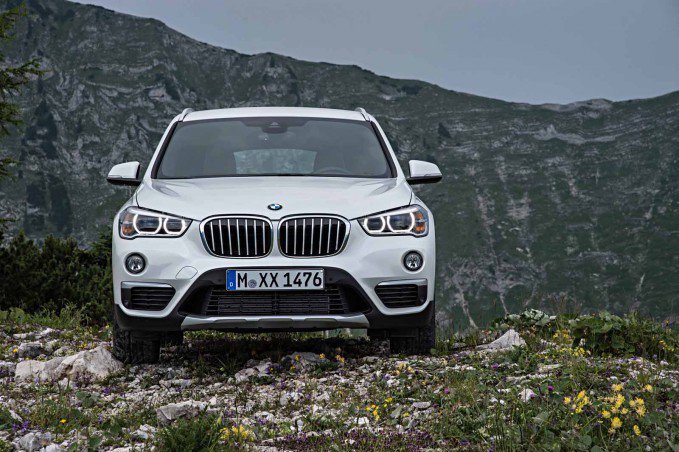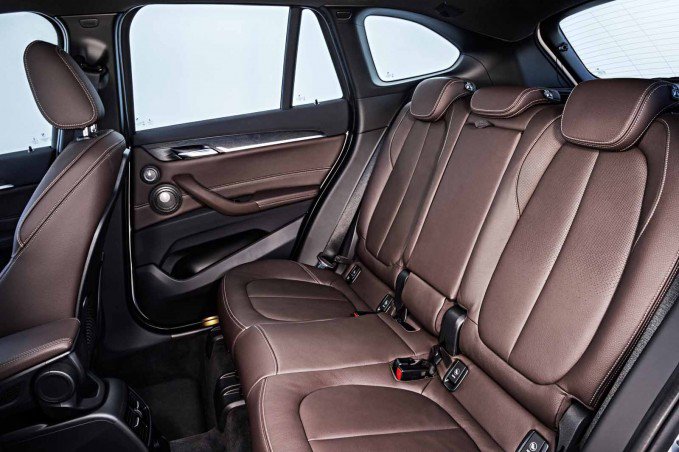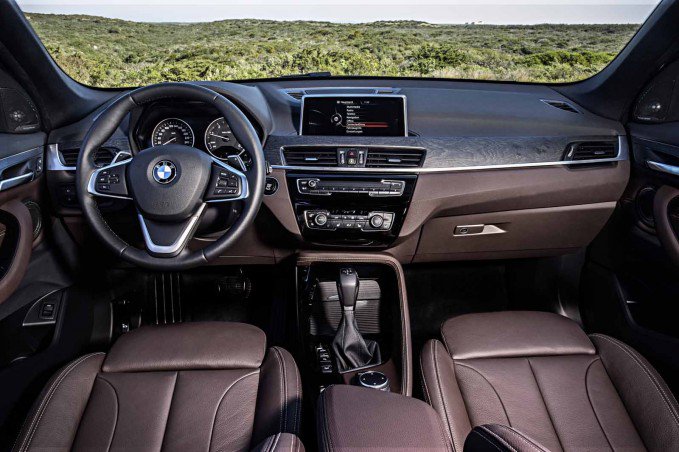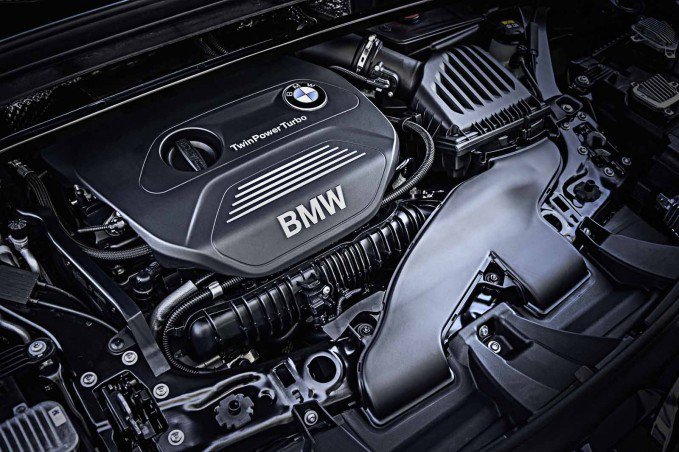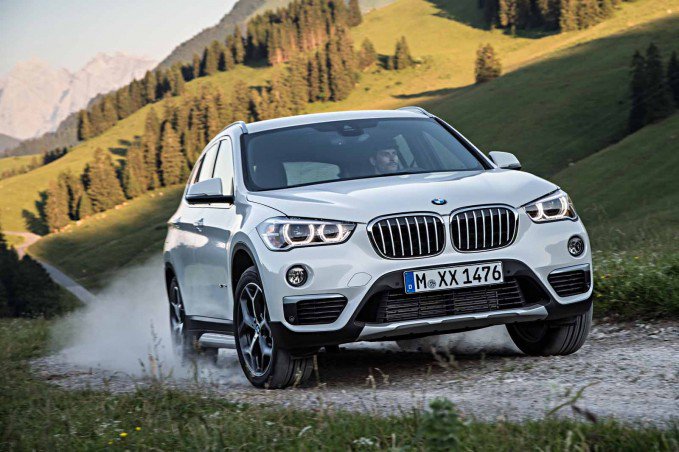The BMW faithful are up in arms.
The 2016 X1 small crossover is part of BMW’s new line of vehicles that are built on *gasp* a front-wheel drive architecture. That’s right; a transversely mounted engine has found its way under the hood of a Bimmer. How could this be? How could BMW’s proud tradition be abandoned like this?
The reason is simple. For this segment, having a more compact transversely mounted engine just makes a lot more sense and leads to a better overall product.
A Better Suited Chassis
Still, many BMW fanatics are not too keen on the idea of the 2016 X1. BMW has a strong tradition and reputation for building engaging, rear-wheel drive chassis’ and the thought of the “Ultimate Driving Machine” switching to front-wheel drive is a hard pill to swallow.
SEE ALSO: 2013 BMW X1 xDrive35i Review
But the X1 isn’t a dedicated performance vehicle. It’s a small crossover designed to blend of luxury, performance and utility. And it’s not like BMW has completely abandoned the performance-minded shopper. If similar utility and luxury is desired with added performance around the same price point, there’s still the 328 xDrive28i Tourer.
Still Capable, Now Softer
And despite what may be assumed, the X1’s new chassis is capable in its own right, regardless of which way the engine is pointing. After all, it is based on the MINI Countryman platform, which is far from a hot mess in the handling department.
I know BMW will hate me for typing this, but the X1 does drive like a larger, more powerful and refined MINI. Pop the drive mode selector into ‘sport’ and the stiffened dampers and heightened steering leads to a crossover that’s still enjoyable to toss around on twisting back road.
Better still, when the drive selector is placed in comfort mode, the 2016 X1 rides so much smoother down the road. The old X1 was set up too stiff, no matter what drive mode or suspension was installed. It gained a reputation for being a bit of a bucking bronco. The new model is serene, even on neglected stretches of asphalt.
Similar Outside, Larger Inside
Measuring 175.4 inches in length, the 2016 BMW X1 is about an inch shorter than the 2015 model. The new vehicle is around an inch wider and two inches taller. Despite similar exterior dimensions, interior space is way up. Rear seat legroom is now an accommodating 37 inches; up over two inches compared to the 2015 model. Cargo space also sees a healthy increase to 27.1 cubic feet behind the rear seats.
More than just numbers, the interior of the X1 just feels so much more spacious. A rear facing child seat fits in the back without issue and now allows a passenger to be seated in front of it. That’s not something that could always be said about the old X1.
The increased cargo area is still on the small side, but can accommodate larger items like golf clubs, baby strollers and hockey bags. Another benefit of having a front-wheel drive based architecture is a smaller center tunnel and lower center console. It also allows middle seat passengers to have more rear legroom.
Interior Done Right
The new X1’s interior is the usual modern BMW design. There are nice black wood and satin accents and I quite like the wide display screen. Even though it protrudes out of the dash, it’s less awkward looking than other examples and offers up a lot of information.
SEE ALSO: 2013 BMW X1 sDrive28i Review
The latest
version of BMW’s iDrive infotainment software is easy to use and thankfully BMW has retained some hard buttons to control items like the climate system. A small detail I grew to appreciate during my time behind the wheel of the X1 was the head-up display – specifically the fact that when scrolling through audio channels the information appeared up there on the windshield. It’s less distracting than having to look at the center display screen and allows me to keep my eyes closer to the road.
Less Power, Similar Performance
Under the hood of the X1 xDriver28i still resides a 2.0-liter turbocharged four-cylinder, but it’s not the same unit as found in the 2015 model. Power is down 12 hp and 2 lb-ft of torque, officially rated at 228 hp and 258 lb-ft. Gone for 2016 is the xDrive35i option, which is a shame, but inevitable with the platform change.
Sending power to all four-wheels is an eight-speed automatic that BMW claims can propel the X1 from zero to 60 mph in 6.3-seconds. Despite the decrease in power, that’s only a tenth of a second behind last year’s vehicle, partially due to a 66-lb reduction in curb weight.
A Strange Nuance
Even if the X1 has similar performance numbers, in comfort mode, it doesn’t always feel like it. There’s a lengthy delay in acceleration from a complete stop that at times can be quite annoying. Strangely, it doesn’t appear to be the byproduct of turbo lag or transmission performance as when sport mode is engaged, the delay disappears.
Acceleration in sport mode is instant and smooth – the way the vehicle should always accelerate. It appears the delay may be programmed as a potential concession for fuel economy. For 2016, fuel economy ratings have increased by 2 mpg on the highway, now officially rated at 22 mpg city and 32 mpg highway.
Once underway, irrespective of which drive mode is selected, the engine does offer plenty of power. Shifts are quick and the X1 seemingly always has the proper gear engaged. But if leaving gear selections to the computer overlords is not your thing, playing with the paddle shifters in sport mode can be rather entertaining.
The Verdict: 2016 BMW X1 xDrive28i Review
Switching the X1 to a front-wheel-drive platform did not kill the vehicle, it made it better. It’s similar in concept to the Mercedes-Benz GLA and Audi Q3, but feels closer related to BMW’s core products than its competitors do to their respective siblings. When used correctly, it appears a transversely-mounted engine in a BMW can work. Let’s just not carried away and try it in a M2 or M3, OK, BMW?
Discuss this story on our BMW X1 Forum







